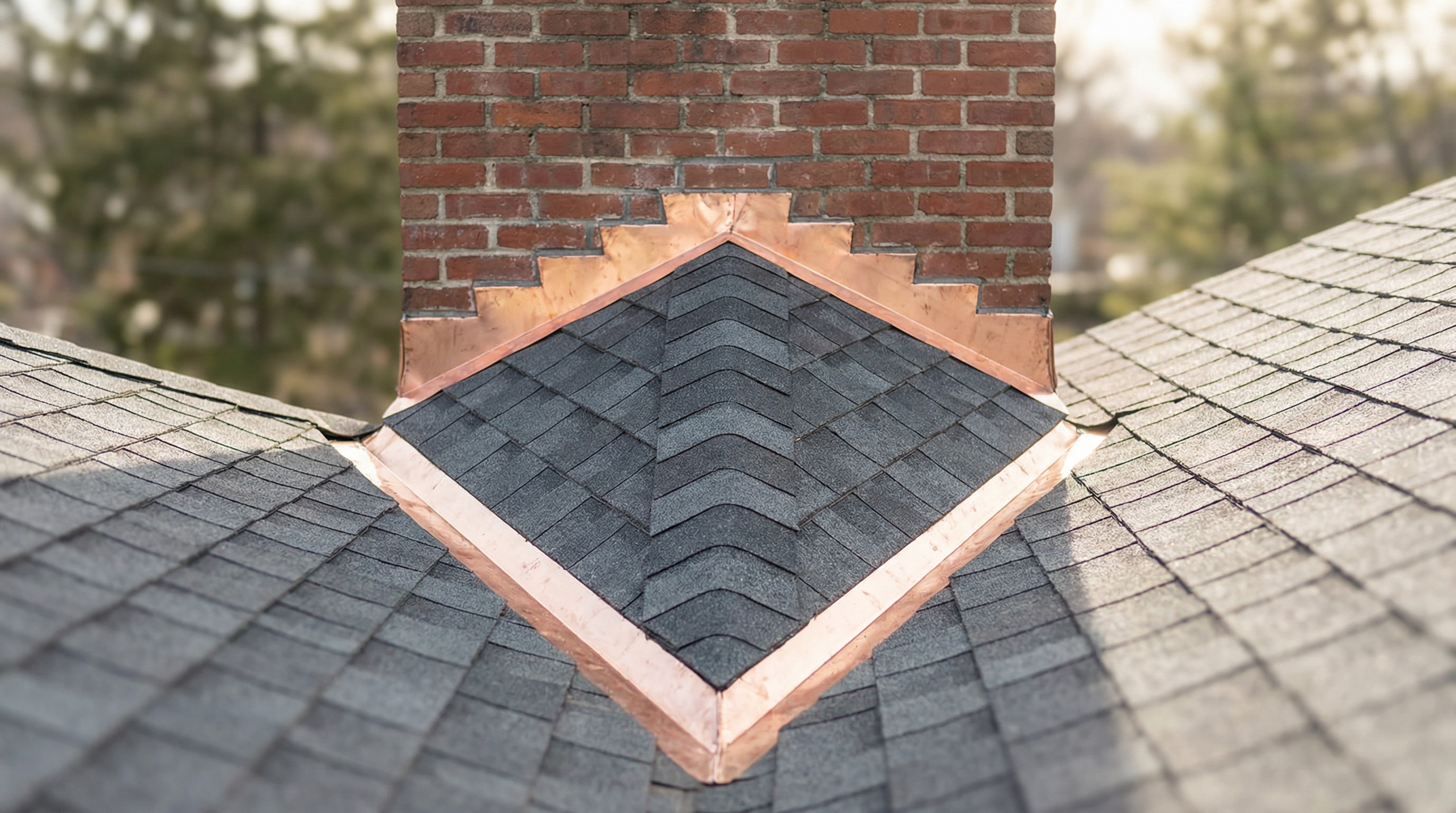A roof cricket is a small, peaked ridge built behind chimneys and skylights to divert water around them instead of letting it pool. Without one, water collects against the obstruction and eventually works its way under your shingles.
We'll walk you through how crickets protect your roof, when you actually need one according to building code, what you can expect to pay, and the warning signs that tell you yours might need some attention.
What Is a Roof Cricket
A roof cricket is a small, peaked structure built on a sloped roof behind chimneys, skylights, or other obstructions. Its purpose is simple: divert water around the obstacle so it does not pool and cause damage. You might also hear it called a chimney saddle, which refers to the same thing.
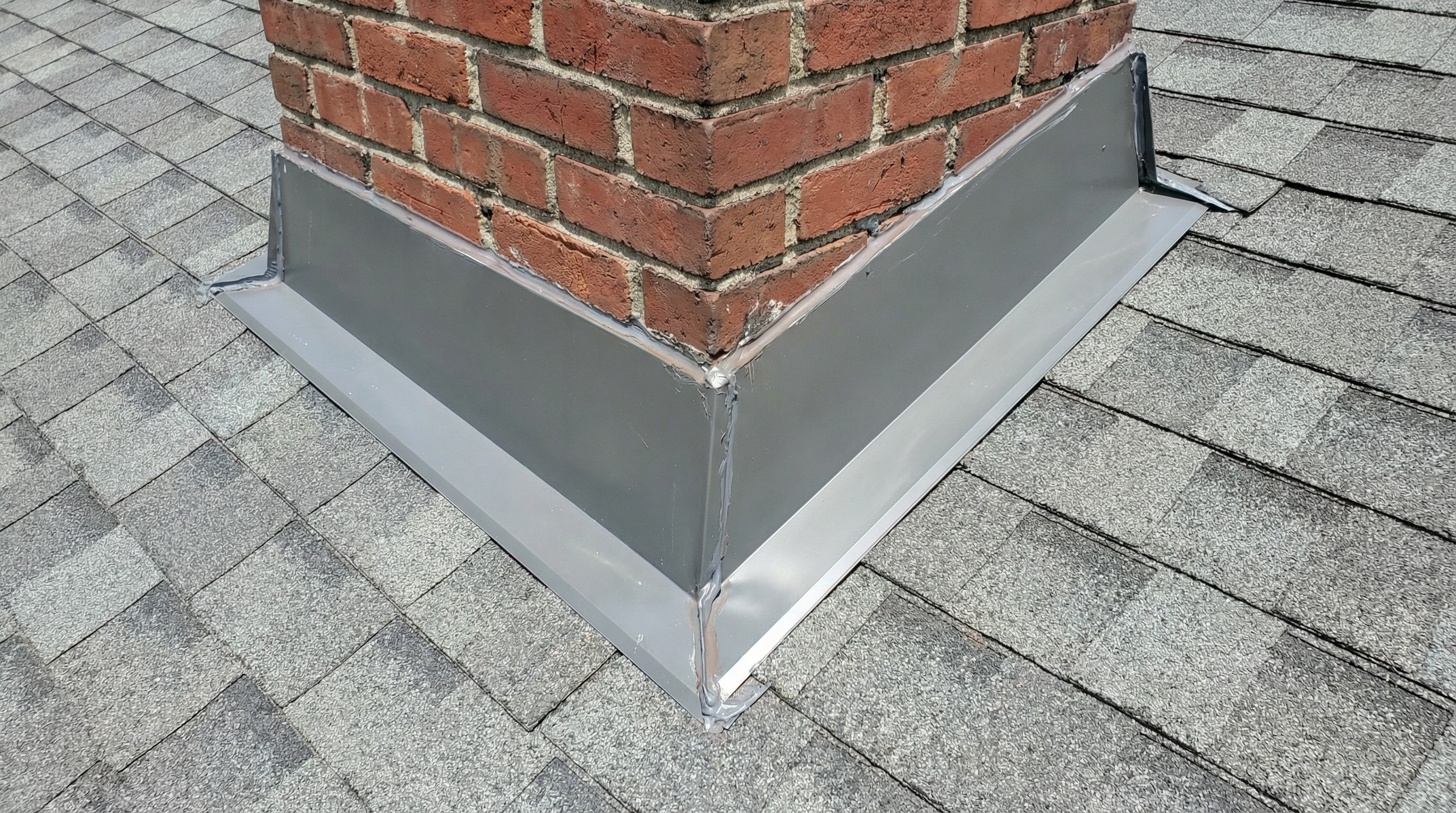
Here's what happens on your roof during a rainstorm. Water flows downhill until it hits something in its path, like a chimney. Without a cricket, that water collects behind the chimney and sits there. Over time, standing water works its way under shingles and into your roof deck. A cricket prevents that by creating a small ridge that splits the water and sends it flowing to either side.
Most crickets are built with a wood frame, covered with plywood, and then finished with either shingles or metal flashing. The finished cricket blends into your roofline while doing the quiet work of keeping water moving where it belongs.
How a roof cricket protects your home
In Chattanooga's climate, which often brings heavy rain and occasional snow, roof crickets are especially important to prevent water from pooling behind chimneys and skylights. Regional weather patterns can lead to faster deterioration if water is not properly diverted, so local homeowners should pay extra attention to the condition of their roof crickets.
Water damage is one of the biggest threats to any roof, and a cricket is one of the simplest ways to protect against it. The peaked shape forces water to change direction, flowing around the chimney instead of sitting behind it.
Here is what a properly installed cricket accomplishes:
Diverts water flow: Rain and snowmelt split around the chimney and continue toward your gutters
Prevents pooling: Water cannot collect at the base of the chimney where it would otherwise seep under shingles
Reduces debris buildup: Leaves and branches slide off the angled surface instead of piling up
Limits ice dam formation: In winter, the sloped design helps prevent ice from building up during freeze-thaw cycles
Even small amounts of trapped water can cause serious problems over time-rotting the decking underneath your shingles, soaking your attic insulation, and eventually leading to leaks inside your home.
Where Roof Crickets Are Installed on a Roof
Crickets go wherever water might otherwise get trapped behind an obstruction. The specific location depends on your roof layout and what is sticking up through it.
Behind Chimneys
Chimneys are the most common location for a roof cricket. They are wide, they sit directly in the path of water flowing downhill, and they create a natural dam on the uphill side. A cricket behind the chimney forms a peak that directs water to either side, preventing it from pooling against the chimney base.
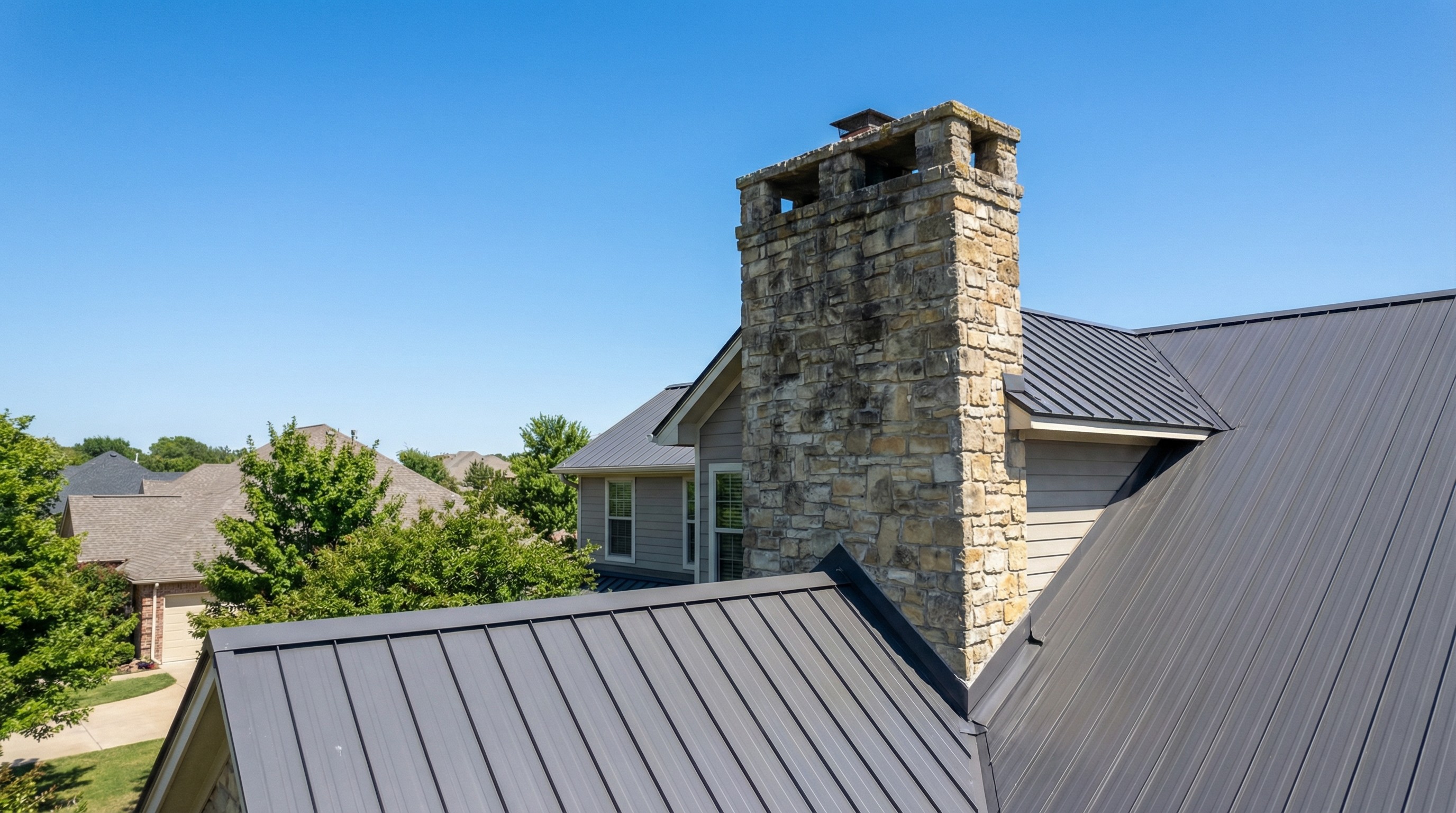
Building code requires a cricket when your masonry chimney is wider than 30 inches. But even narrower chimneys benefit from one, especially on steeper roofs where water moves faster.
Behind Skylights
Skylights interrupt water flow just like chimneys do, though they are usually smaller. On lower-slope roofs where water moves more slowly, a cricket on the uphill side of a skylight helps keep drainage working properly. Not every skylight installation includes a cricket, but it is worth asking about if you are having one installed.
On Flat Roofs and Commercial Buildings
Flat roof crickets work differently than residential ones. Instead of a wood frame with shingles, flat roof crickets are typically made from tapered insulation. The insulation creates a gentle slope that directs water toward drains and scuppers. The goal is the same as on a sloped roof: prevent ponding water that can damage the roof membrane over time.
When Building Code Requires a Chimney Cricket
The International Residential Code requires a cricket when a chimney measures more than 30 inches wide on the uphill side. Most homes built in recent decades with chimneys of that size will already have one installed.
However, older homes often lack crickets entirely, even on wide chimneys. If your home was built before modern code requirements, there is a good chance no cricket was installed during original construction. Adding one during a roof replacement is straightforward and can prevent future leaks.
Even when code does not require a cricket, many roofers recommend installing one anyway. The cost is relatively small compared to the protection it provides, and it is much easier to add during a full roof replacement than as a standalone project later.
How Much Does a Roof Cricket Cost
Cricket costs typically range from $300 to $800 for most residential chimneys, thoug...
Factor | How it affects cost |
|---|---|
Size of the chimney | Larger chimneys require bigger crickets with more materials |
Material choice | Metal flashing costs more upfront but typically lasts longer than shingles |
new roof vs. retrofit | Adding a cricket to an existing roof requires extra labor to remove and replace shingles |
Roof pitch and access | Steeper roofs and difficult access points increase labor time |
When comparing quotes, look for the cricket listed as a separate line item, such as ...
Tip: Get your quotes to compare cricket costs from 3-5 vetted Chattanooga roofers-with transparent pricing that saves you an average of 20% by eliminating sales commissions. Get your quotes to compare cricket costs and overall project pricing side by side.
Roof Cricket Materials and Design Options
Every cricket starts with a wood frame covered by sheathing, usually plywood or OSB. From there, you have two main choices for the outer covering, and each has trade-offs worth understanding.
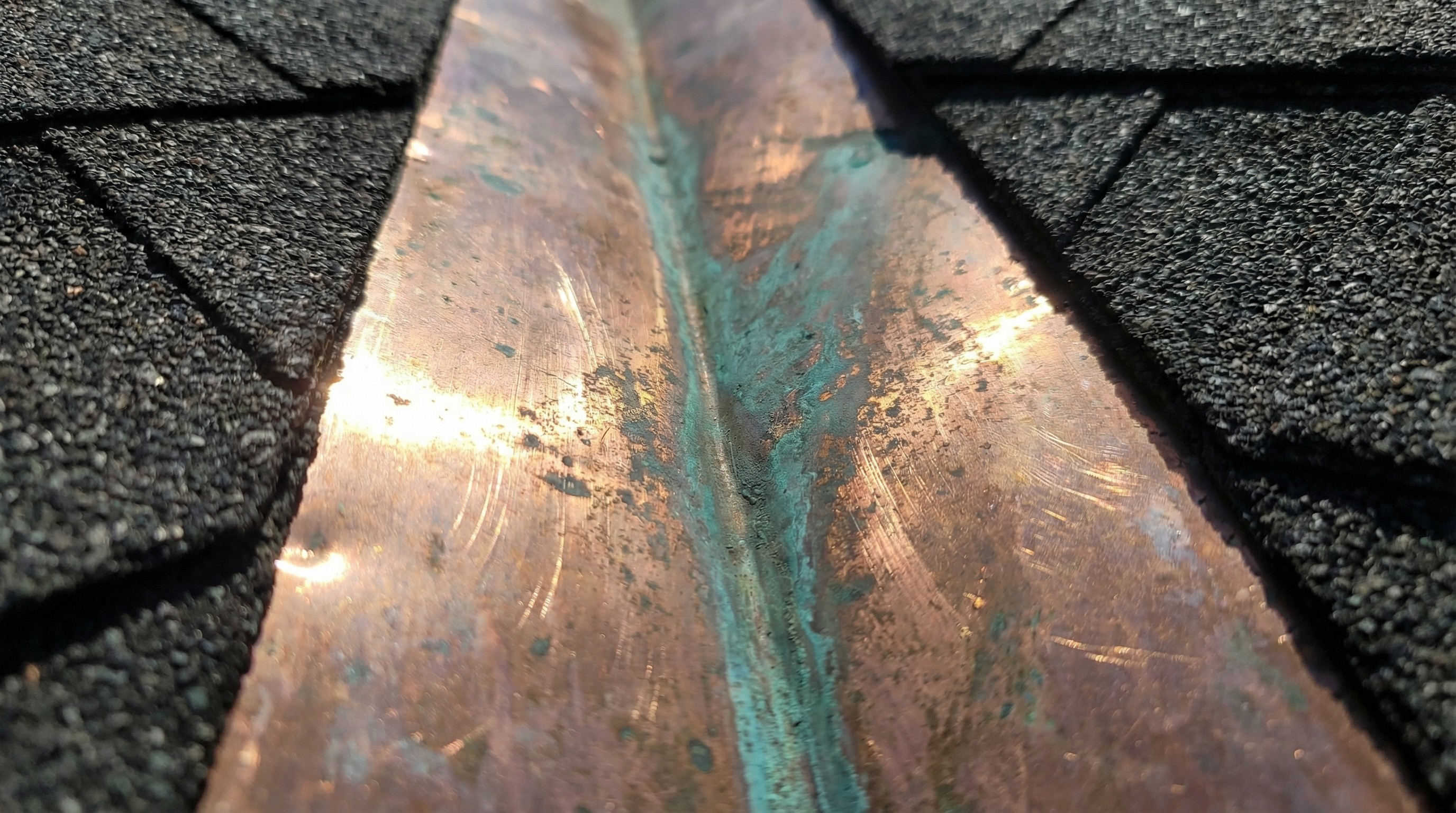
Metal Cricket Flashing
Metal flashing is the more durable option. Aluminum, copper, and galvanized steel are all common choices. Metal sheds water quickly, resists wear, and typically outlasts the shingles around it. The metal cricket integrates with your chimney's step flashing to create a continuous barrier against water intrusion.
Copper is the most expensive but also the longest-lasting. Aluminum and galvanized steel cost less and still perform well for decades. If you're planning to stay in your home long-term or want the cricket to outlast multiple roof replacements, metal is typically worth the extra investment.
Shingle-Covered Crickets
Shingles can be installed over the cricket to match the rest of your roof. This is a common choice on asphalt shingle roofs because it creates a seamless appearance. Underneath the shingles, proper flashing is still installed for waterproofing. The shingles are really just the visible layer.
Shingle-covered crickets tend to cost less upfront than metal, but they may not last quite as long. If your roof is due for replacement in 15 to 20 years anyway, matching shingles often make sense. If you want the cricket to outlast multiple roof replacements, metal is worth considering.
How Roofers Build and Install a Roof Cricket
Here's how experienced roofers typically handle the installation.
1. Remove existing roofing and flashing
The roofer clears the area behind the chimney down to the bare roof deck. Old shingles, underlayment, and flashing all come off to create a clean starting point.
2. Build the cricket frame
A triangular wood frame is constructed to form the peaked ridge. The angle of the frame matches your roof pitch so water flows naturally off the cricket and onto the surrounding roof surface.
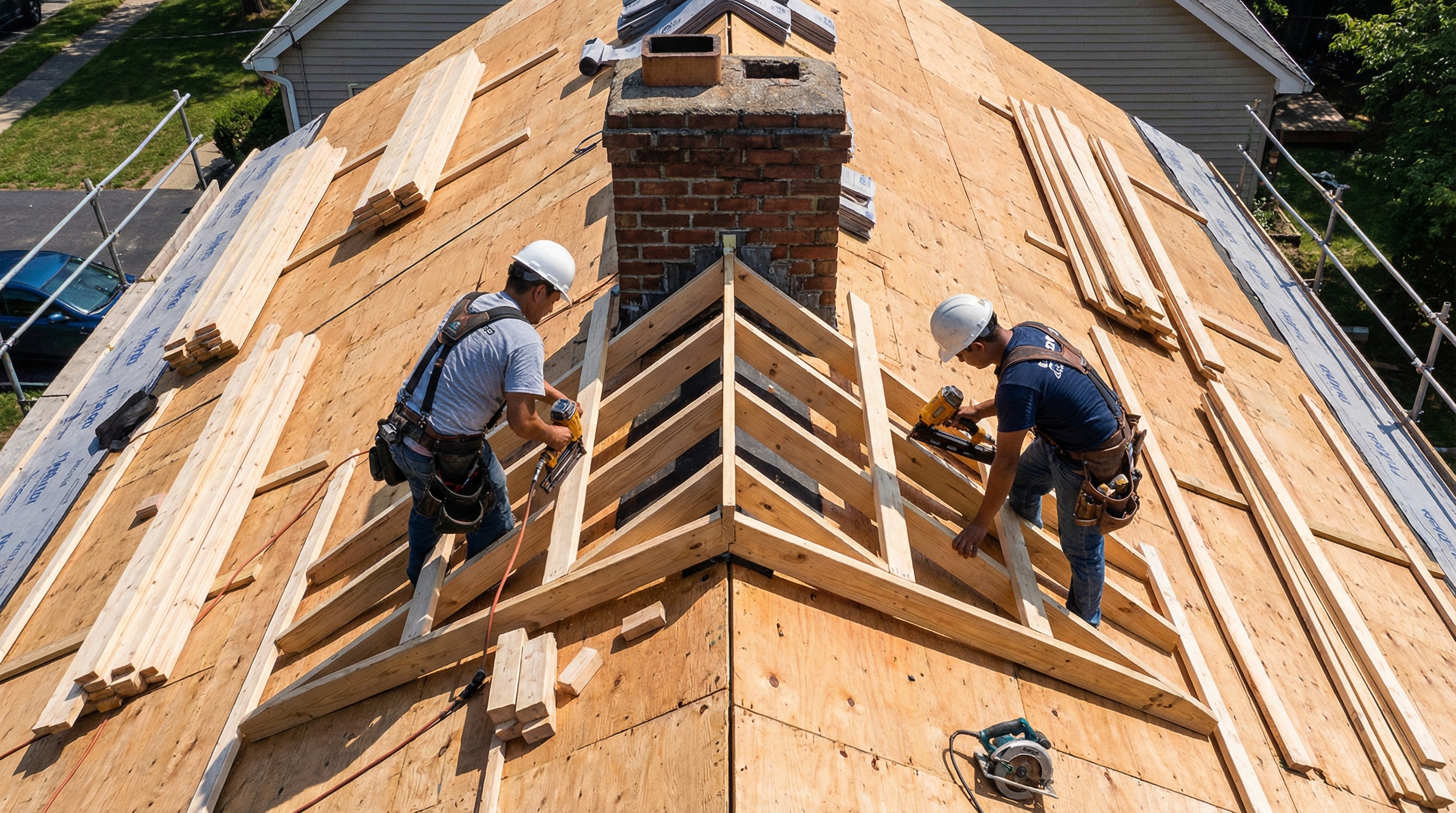
3. Install sheathing over the frame
Plywood or OSB is attached to the frame, creating a solid surface for the waterproofing layers and final covering.
4. Apply underlayment for waterproofing
A layer of ice and water shield or synthetic underlayment goes over the sheathing. This underlayment is a self-adhesive membrane that seals around nail penetrations and provides backup protection if water ever gets past the outer covering.
5. Add flashing or shingles
The final covering is installed and carefully integrated with the chimney flashing. Proper integration at this step is critical. If the cricket flashing does not tie into the chimney's step flashing correctly, water can still find its way in.
6. Seal all joints and edges
All joints where the cricket meets the chimney and the surrounding roof are sealed with roofing-grade sealant. This final step closes any remaining gaps where water could penetrate.
Signs Your Roof Cricket May Need Repair or Replacement
Crickets can fail over time, especially if they were not installed correctly in the first place or if the materials have simply worn out. Knowing what to look for can help you catch problems early.
Water stains near the chimney: Brown spots on your ceiling or walls near the chimney often indicate water getting past the cricket or flashing
Visible rust or holes in metal flashing: Deteriorating metal loses its ability to shed water effectively
Lifting or missing shingles on the cricket: Exposed underlayment or decking allows water to penetrate
Debris buildup behind the chimney: If leaves and branches are piling up instead of sliding off, the cricket may not be doing its job
Leaks during heavy rain: Water intrusion on the uphill side of the chimney points directly to cricket or flashing failure
If you notice any of these signs, it's important to have a qualified roofer inspect the area before the problem gets worse.
How to Compare Roof Quotes That Include a Cricket
When you are reviewing quotes for a roofing project, a few specific details help you evaluate cricket quality and pricing.
Line-item pricing: The cricket should appear as a separate item so you can see exactly what you are paying
Material specification: The quote should state whether metal or shingles will cover the cricket
Flashing details: Look for mention of step flashing and counter-flashing as part of the cricket system
Warranty coverage: Ask whether the cricket and associated flashing work are covered under the roofer's workmanship warranty
Comparing multiple quotes makes it much easier to spot fair pricing and quality differences. When roofers know they are competing for your project, you often see better pricing and more detailed proposals.

